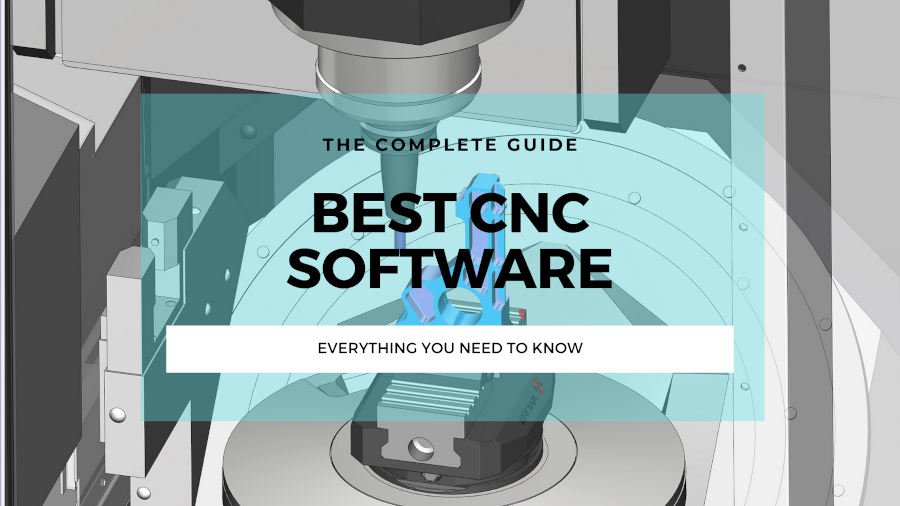If you are about to buy stepper motors for your CNC machine, then you are in the right place. Choosing the best stepper motor for CNC can be distressing. When you look up their specs, you see many variables that only make sense to electrical engineers.
To find the best stepper motor for your CNC, should you only look at the NEMA size, price, and the holding torque?
Although the answer is no, that is what most listicles on the internet have considered. But here, you will find the best stepper motors with solid reasons for being on the list.
Quick Overview
The following are our overall top three favorite stepper motors:
Cheapest stepper motors we recommend:
For high-quality, low noise, low heat, and amazing high-speed performance:
These are not all the stepper motors we have on our list. We present the best stepper motors in different ranges of holding torque in this article.
Generally, StepperOnline bestows the best prices, Sanyo Denki has high quality but is difficult to buy online, and Oriental Motors has high quality and is easy to buy online but it has the highest prices.
CNCSourced is reader-supported. When you buy through links on our site, we may earn an affiliate commission. Learn more
How We Tested Them
Here is how I have qualitatively graded various stepper motor brands from 1 to 5 (5 being the best score).
| Brand Name | Country | Quality | Performance (Torque Curves – Heat – Noise) | Variety of motors | Ease of Online Purchase and Shipping |
|---|---|---|---|---|---|
| Oriental Motors | Japan | 5 | 5 | 5 | 5 |
| Sanyo Denki | Japan | 5 | 5 | 5 | 2 |
| StepperOnline | China | 3.5 | 3 | 5 | 5 |
| Leadshine | China | 4 | 3 | 5 | 3 |
| Dings Motion | US | Unclear | 3.5 | 4 | 4 |
| Delta Line | Switzerland | Unclear | 4 | 3 | 3 |
| Motech Motors | China | Unclear | Unclear | 4 | 3 |
| Oyo Steppers | China | Unclear | 3.5 | 4 | 3 |
For the cheapest stepper motors, Chinese brands performed well. StepperOnline came on top for their online sales on Amazon from different countries with free delivery.
For the highest quality and the best performance of stepper motors, Oriental Motor and Sanyo Denki are our choices.
Oriental Motors is a little pricier but easier to buy with just a few clicks. Plus, you can get a free consultation from Oriental Motors about what motor size and torque you need. As we will explain, buying a Sanyo Denki is a little more complicated.
In these brands, we have surveyed hundreds of stepper motors to bring you this list.
Best NEMA 17 Stepper Motors for CNC
1. StepperOnline 17HS19 Stepper Motor
- Price: 5 (out of 5 which means it is very cheap)
- Strength at high speeds: 3
- Quality: 3
- Ease of purchase: 5
- Holding torque: 59Ncm (84 oz.in)
- Current: 2A per phase
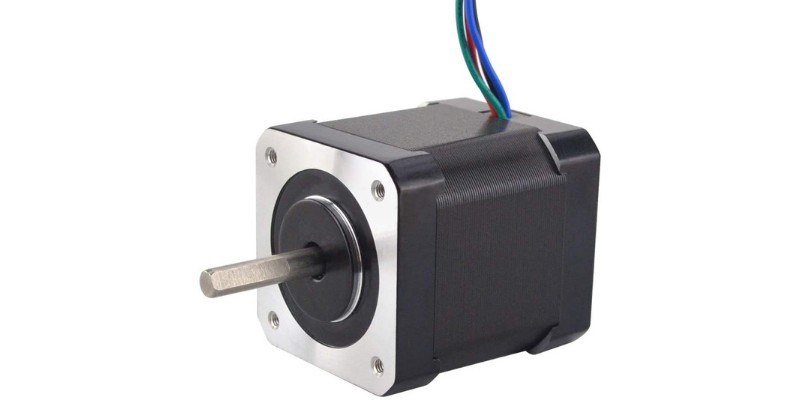
StepperOnline has two dozen NEMA 17 stepper motors, but only a few of them caught my attention for CNCs. The 17HS19 costs only $13.99 with free shipping on Amazon.
It has a holding torque of 59Ncm or 84oz.in – this is a high torque in its price range. It has 4 long leads and you can use it in 3D printers and smaller CNCs.
If you are looking for cheap stepper motors for a CNC router whose gantry is around 20Kg (or less) I recommend this one.
Quality
StepperOnline makes the E series out of lower quality materials (cheapest) and at their lowest-grade manufacturing site. These stepper motors’ names start with HE (Hybrid E).
The S series has medium-quality materials at a better manufacturing site. Their names start with HS which stands for Hybrid S.
The P series enjoys StepperOnline’s best materials at their main site. These stepper motors’ names start with HP which stands for Hybrid P.
Unfortunately, there is no P series for this stepper motor. Still, the quality of the winding is supposed to be as good as the P series.
Strength at High Speeds
StepperOnline does not show us the curve for full step excitation. When I judge the curve based on the half-step curve it turns out ordinary. It retains 70% of its strength at 300RPM which is pretty average for its size.
How to Purchase
- You can buy StepperOnline’s 17HS19 on Amazon with fast delivery.
- You can buy 4 17HS19 stepper motors on Amazon with this link to get an even better deal.
- You can buy 5 17HS19 stepper motors on Amazon with this link.
Other Specs
This stepper motor has a phase resistance of 1.4ohms and a rated current (per phase) of 2A. These are all normal numbers for a motor winding of this size.
2. Oriental Motors PKP244D15 Stepper Motor
- Price: $57
- Strength at high speeds: 5 (out of 5)
- Quality: 5
- Ease of Purchase: 5
- Holding Torque: 48Ncm (68 oz.in)
- Current: 1.5A per phase
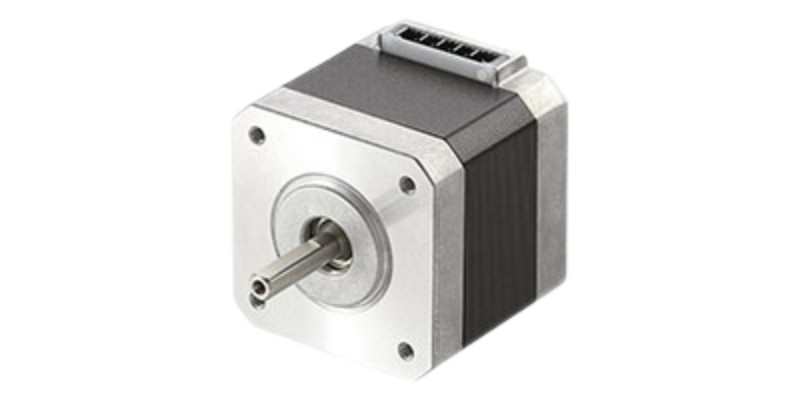
This may just be the best stepper motor you can find in this torque range (under 60Ncm).
So, if you are looking for stepper motors for a small and light CNC router, that brings in high-quality and amazing speed, this is the correct choice for you.
This stepper motor is so good that it can drive heavier CNCs compared to stepper motors of the same size and weight.
It has a flat connector type. So, you either buy a motor cable separately (on the same page for $7) or make your own cable.
Quality
Oriental Motors is one of the leaders in this industry. They have been around for over a century. Their stepper motors are well-known for high-quality materials.
One of the reasons they are among the best stepper motors is that they have low vibration and low noise. So, Oriental Motors PKP244D15 deserves a high spot in the list of best stepper motors.
Strength at High Speeds
This stepper motor performs fantastically and keeps a lot of its muscles at high speeds. Here is its torque curve.
As you can see, it retains 92% of its strength at 300 RPM in ordinary driving conditions.
Other Specs
Its resistance per phase is 2.1 ohms and its inductance is 4.4mH/phase. These numbers are all normal.
How to Purchase
Oriental Motors have online sales on their website, so you can buy this motor here. You can buy the motor cable separately as well.
3. Other Oriental Motors That Are Great for CNC
Some other Oriental Motors CNC stepper motors with higher holding torques include:
- PKP245D15A2 has 66Ncm of holding torque (93 oz.in) and costs $63.
- PKP246D23A2 has a holding torque of 99Ncm (140 oz.in) and costs $67.
Best NEMA 23 Stepper Motors
1. StepperOnline’s 23HS22-2804S (and 23HP22) Stepper Motor
- Strong at fast speeds: 3
- Quality: 3.5-4
- Ease of Purchase: 5
- Holding Torque: 126Ncm (179oz.in)
- Current: 2.8A per phase
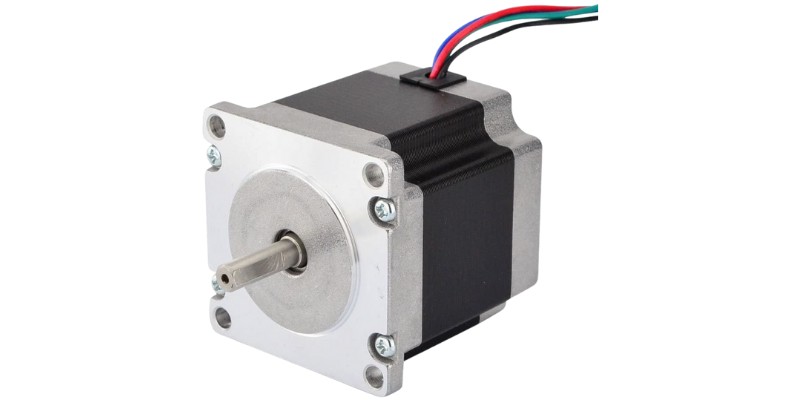
Here we have another highly affordable bipolar stepper motor from StepperOnline. If your gantry is up to 40kg and you are looking for a cheap stepper motor, I recommend this one.
The S version is available in China, US, Germany, France, and Australia, but the P version is only available in China and Germany.
As we have mentioned, its holding torque is 126Ncm or 178oz.in.
Quality
As explained earlier, the P series has better quality. Still, the quality is not as high as Oriental Motors or Sanyo Denki.
But their quality is more than enough for hobbyists and small CNC shops.
Strength at High Speeds
This stepper motor is a little better than ordinary in this regard. They only show us the curve with micro-stepping.
With 400 micro-stepping, it yields more than 80Ncm at 600 RPM.
Other Specs
Its inductance is 2.5mH (at 1kHz) and its phase resistance is a mere 0.9 ohms.
How to Purchase
- You can buy one StepperOnline 23HS22-2804 on Amazon with this link.
- You can also buy 3 StepperOnline 23HS22-2804 on Amazon to get an even better deal.
2. StepperOnline 23HS45 Stepper Motor
- Strong at fast speeds: 2.5
- Quality: 3
- Ease of Purchase: 5 + free and fast delivery
- Holding Torque: 300Ncm (425oz.in) (Good for CNC mills)
- Current: 4.2A per phase
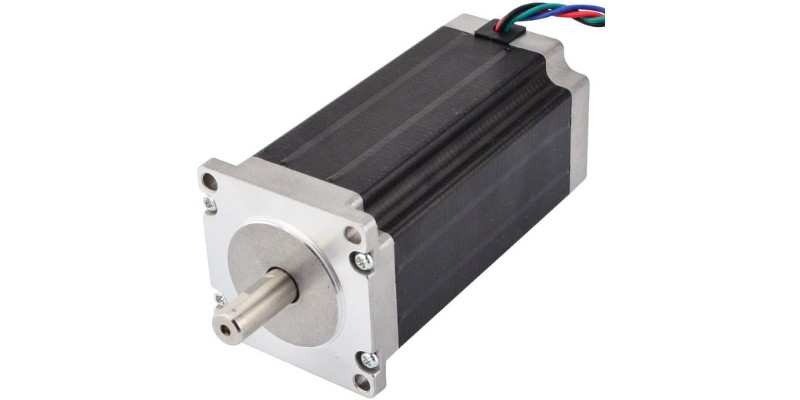
These are such affordable stepper motors. They have 300Ncm of holding torque which is appropriate for a CNC mill.
Their performance is average and not as stunning as Oriental Motors, but they are enough if you need cheap stepper motors with an extremely high holding torque. Especially if you have a CNC mill that needs a NEMA 23 stepper motor.
Quality
These stepper motors have an average quality which is good enough for most hobbyists and small shops.
Strength at High Speeds
You should expect much fewer muscles from this motor at high speeds even with micro-stepping. You can see this in the torque curve.
But if you want this stepper motor for a CNC mill, you will never use it at high speeds anyway. So, this is how a mill stepper motor is supposed to behave.
How to Purchase
- You can buy StepperOnline 23HS45 on Amazon with free delivery.
- You can also buy three StepperOnline 23HS45 on Amazon to get an even better deal.
3. Sanyo Denki SM2561C20B Stepper Motor
- Price: Around $37 (probably without shipping)
- Strength at fast speeds: 5
- Quality: 5
- Ease of purchase: 3
- Holding Torque: 75Ncm (106 oz.in)
- Current: 2A
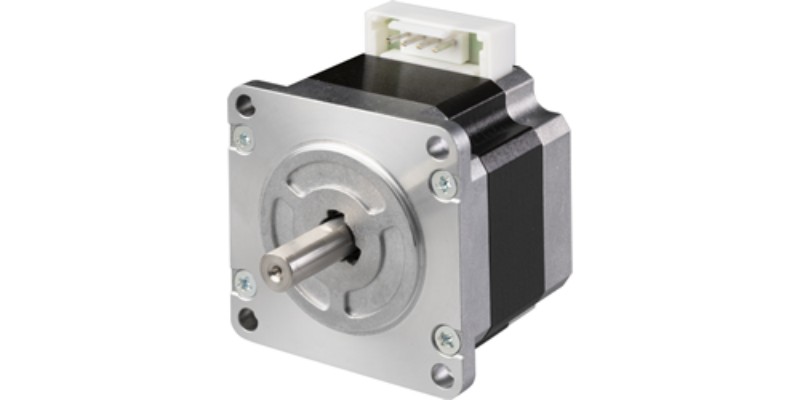
The SM2561 are NEMA 23 stepper motors with holding torque of 75Ncm (106oz.in). These are great for midsize routers. I recommend SM2561C20B which has a rated current of 2A per phase.
This choice doesn’t require powerful drivers and you can save your money there. It is capable of working at high feed rates (up to 3000mm/sec) on a rather heavy CNC router.
Plus, you don’t get much better high-speed performance by going with higher currents in this series.
Also, the Oriental Motors’ stepper motors we have on our list are rated 1.4A and 2.8 A per phase. I have chosen this one from Sanyo Denki at 2A per phase to sit in the middle of them. So, this stepper motor is good for feed rates up to 3000mm/min (118 IPM).
Quality
Sanyo Denki is a well-known company in industrial automation for its high-quality parts.
These are very high-quality stepper motors with low noise and low heat. You can use them in weather conditions of up to 90% humidity.
Strength at High Speeds
Sanyo Denki is one of the best stepper motor brands in this area along with Oriental Motors. Take a look at its beautiful torque curve.
This is one of the best stepper motors for CNC since it retains over 95% of its holding torque up to 300 RPM.
It sits between the D14 and D28 versions of Oriental Motors above on this list.
Other Specs
The winding has 1.1 ohms per phase and 3.5mH per phase.
How to Purchase
This is where Sanyo Denki scores low. You have to visit this page on their website to find the closest distributor to you, or you can buy them from third-party vendors online.
4. Sanyo Denki SM2562C30B (and C40B) Stepper Motor
- Price: Around $40 (probably without shipping)
- Strength at high speeds: 5
- Quality: 5
- Ease of Purchase: 3
- Holding torque: 140Ncm (198 oz.in)
- Current: 3A per phase for C30 and 4A per phase for C40
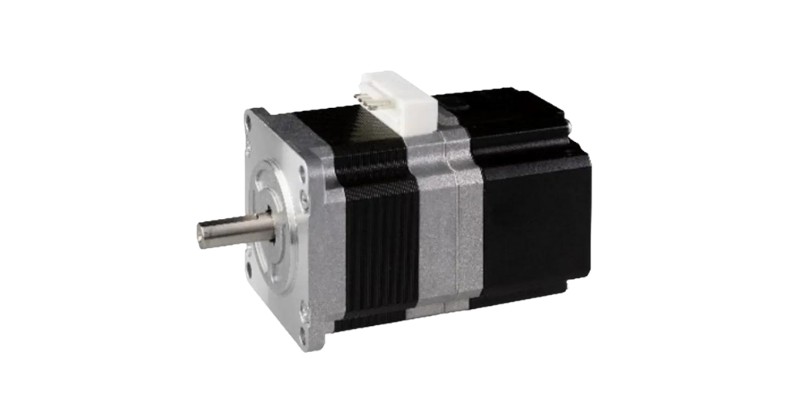
The holding torque of the SM2562 NEMA23 stepper motors is 140Ncm. So these are suitable for larger and heavier CNC routers.
In this series, you get a significantly wider speed range by getting a higher current stepper motor but I chose the 3A/phase because this is enough for machining with a heavy router at high feed rates (like 3000mm/sec).
So, we don’t need more speed and we keep the heat lower and the stepper drivers cheaper this way.
Quality
Sanyo Denki stepper motors have high quality, low vibration, and low noise.
High-Speed Strength
This is simply the best stepper motor in this torque range. It even outperforms Oriental Motors down our list (even with less current going through its windings). Here is the curve for SM2562C30B
So, you have around 120Ncm at 300RPM and 78Ncm at 600RPM with this stepper motor.
Other Specs
This stepper motor has a phase resistance of 0.68 ohms only and an inductance of 2.9mH and requires only 3A per phase.
How to Purchase
You have to visit this page on their website to find the closest distributor to you or find a third-party vendor.
5. Oriental Motors PKP264D14 (and D28) Stepper Motor
- Price: $66 (without motor cable)
- Strength at high speeds: 5
- Quality: 5
- Ease of purchase: 5
- Holding torque: 74Ncm (1.5 oz.in)
- Current per phase: 1.4 A (D14) and 2.8A (D28)
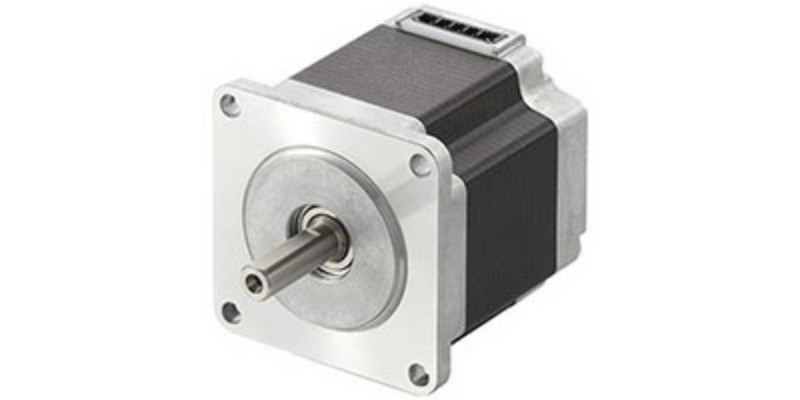
Once again, we see Oriental Motors’ PKP264D28 (and D14) as one of the best stepper motors. It has 74Ncm of holding torque. It’s very high quality, has low vibration, low noise, and exceptional strength at fast speeds.
D14 draws only 1.4A and is good for normal speeds (feed rates of under 2000 mm/min or 79 IPM). It generates low heat.
If you want to work at very high feed rates (around 4000 mm/min or 157 IPM), choose the D28 version which takes 2.8A of current. So, this stepper motor is suitable for any midsize CNC router and it gives you fascinating speed.
There is a 4.2A version of this stepper motor for extremely high speeds as well, but I choose the ones under 2.8A as the best stepper motors for CNC.
However, it has a flat connector and does not include the motor cable. So you have to buy that separately for $7 or make one yourself.
Quality
You can only expect high quality from Oriental Motors.
The versions I have chosen have lower heat than D42. This increases the durability of the stepper motor. These stepper motors are very stable with low noise. They work in environments of up to 85% humidity.
Strength at High Speeds
This stepper motor shines well in this area. As we have mentioned, D28 produces stunning strength at high speeds. Just see the torque curve for D28 below.
It keeps 92% of its strength at 300 RPM. It still has around 54% (40Ncm) at 1000RPM.
Other Specs
D14 version has 2.1 ohms per phase of resistance and 6mH/phase of inductance.
D28 has a phase resistance of 0.57 ohms and an inductance of 1.5mH/phase.
Purchase
- You can buy the D14 version here.
- You can buy the D28 version here.
6. Oriental Motors PKP266D28 (and D42) Stepper Motor
- Price: $71
- Quality: 5
- High-Speed Strength: 5
- Holding Torque: 140Ncm
- Current: 2.8A per phase
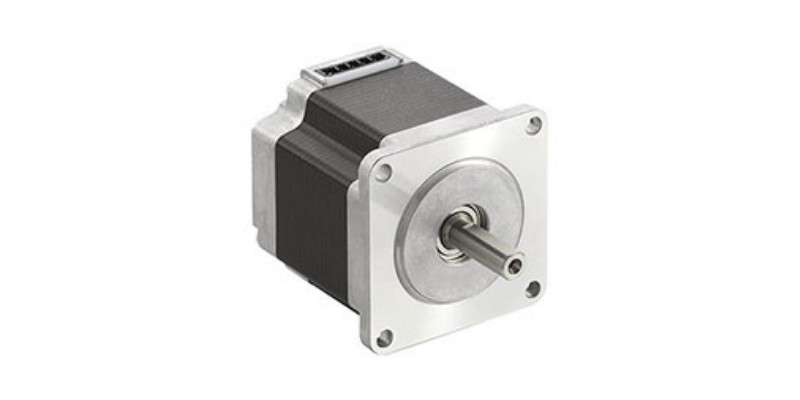
This stepper motor is good for larger and heavier routers. With this high-quality stepper motor of 140Ncm (198oz.in) holding torque, you can buy a stepper motor for larger CNC routers.
They have a lot more high-quality stepper motors in higher torque ranges. So if you need a higher holding torque, you can extrapolate our thinking and find a stepper motor on their list.
PKP266D28 also deserves all the praises we have given to the previous Oriental Motors steppers on our list. But this time, Sanyo Denki SM2562C30 which we just introduced performs slightly better.
Here is its torque curve.
It remains very strong up to 300 RPM and still has 50% of its muscles around 500 RPM.
How to Purchase
You can purchase this stepper motor from here.
How to Choose the Best CNC Stepper Motors for You
If you want stepper motors for a CNC mill, choose one with high holding torque. Since mills are not supposed to work at high speeds, you don’t need to worry about strength at higher speeds.
But stepper motors on our list that have great high-speed performance are more efficient for a CNC router. It does not mean that you can’t use ordinary stepper motors in a CNC router, but if your motor performs well at high speed you just don’t need as much holding torque.
Because in a CNC router, a smaller motor (with lower torque) that has a good high-speed performance does the job of a bigger (higher torque) motor that has ordinary high-speed performance.
So, finding the best stepper motor for routers is somewhat more complicated, but we have graded the high-speed performance of stepper motors on our list from 1 to 5 for your convenience.
Summary
In conclusion, we have found the best stepper motors for CNC. In the category of the cheapest stepper motors, StepperOnline has three winners that are easy to buy on Amazon with shipping from different countries.
Meanwhile, Oriental Motors and Sanyo Denki make the best stepper motors.
These stepper motors are high quality, with low vibration and noise. You can buy Oriental motors easily on their website from the links we have provided while buying Sanyo Denki is a little more complicated.
Some more articles you may be interested in:
- Stepover in CNC CAM
- The truth about CNC feed rate & speed
- The best wood CNC routers
- The best CNC spindles
- How to connect stepper motors to GRBL/Arduino – with and without a CNC shield
- How to wire stepper motors (every wire configuration)
- Best CNC shields



